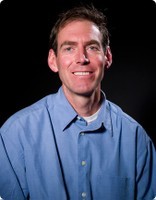
21 Mar MEDICAL MOMENT: SUNBURN
Telluride Inside… and Out is proud to feature the Telluride Medical Center’s MEDICAL MOMENT, a weekly column that answers common medical questions in pop culture. Have a question for the doctors? Click here to send.
Dr. Kent Gaylord answers this week’s question,
HOW LONG DOES IT TAKE TO SUNBURN?
Many of us local Telluride ‘snowbirds’ are planning Spring Break trips to sunny latitudes with the hopes of drying out our bones. Sunblock should be at the top of your packing list, especially since most Telluridians are lily white at this time of year (after months of wearing jeans, turtlenecks, and down jackets). But it is also important to understand just how quickly one can burn without sunblock once your snowbird white skin is exposed to the sun.
There are many parameters that determine how quickly one sunburns, but sun exposure should not be treated as insignificant. Temporary disability is experienced by millions of sunburned people each year; don’t ruin your well-deserved vacation!
Sunburn is caused when the amount of sun exposure or other ultraviolet light sources exceeds the ability of the body’s protective pigment, melanin, to protect the skin. Sunburn in a very light-skinned person may occur in less than 15 minutes of midday sun exposure, while a dark-skinned person may tolerate the same exposure for hours.
The time it takes to burn is also dependent on the time of day one is exposed to the sun. This is due to the fact that the sun’s rays are much stronger, as they are more direct, between the hours of 10 a.m. and 4 p.m.
Complexion and the time of day you spend in the sun are not the only factors that determine how long it takes to get a burn. Other factors that can determine how quickly a person can sunburn, include your latitude and elevation. Higher elevations tend to receive more solar radiation than lower altitudes.
According to the National Institutes of Health, for every 1,000 feet of additional altitude, ultraviolet (UV) radiation increases by nearly 4%. Denver, our Mile-High City, receives approximately 20% more UV radiation than a location at sea level at the same latitude. Solar intensity also tends to increase with decreasing latitude, or distance from the equator. For example, the amount of UV received annually in Hawaii is approximately 10 times the amount received in Alaska.
Cloud cover is also relevant. A person can get a sunburn even on a cloudy day, but a clear day will give you more of a dosage of ultraviolet (UV) radiation than a day with cloud cover. Thin, high cirrus clouds can allow 90% or more of the UV radiation to reach the Earth’s surface, thus it is still important to limit your exposure to the sun on such days.
Also keep your surroundings in mind, since reflected sunlight from surfaces can give you a double dose of UV radiation. Snow can reflect up to 80% of UV that hits it, sand can reflect up to 15% and water up to 10%.
Keep in mind that sunburn is not immediately apparent. Unlike a thermal burn (touching a hot stove), by the time the skin starts to become painful and red, the damage has been done. In severe sunburns, blistering of the skin can occur. Swelling (edema) of the skin, especially in the legs, is common. Toxins are released with sunburn, and fever is not uncommon.
The long-term consequences of years of overexposure to the sun are significant. Just one blistering sunburn, doubles the chances of developing malignant melanoma. Premature wrinkling and aging of the skin are caused by chronic sun exposure. Age spots (lentigo) can also result from sun exposure.
Sun protection is essential. It’s never a good idea to spend time in the sun without protection. Wearing sunscreen will not only help prevent skin cancer, but it will also keep your skin looking healthy and young. Apply sunblock with adequate UV protection in the early morning and throughout the day, and take care to reapply after going in the water.
Editor’s note: The Telluride Medical Center is the only 24-hour emergency facility within 65 miles. You can choose your own medical provider visit with a specialist or take advantage of their Mountain Skin Care services. As a mountain town in a challenging, remote environment, a thriving medical center is vital to our community’s health.
For more Medical Moments on TIO, Click Here.




Sorry, the comment form is closed at this time.